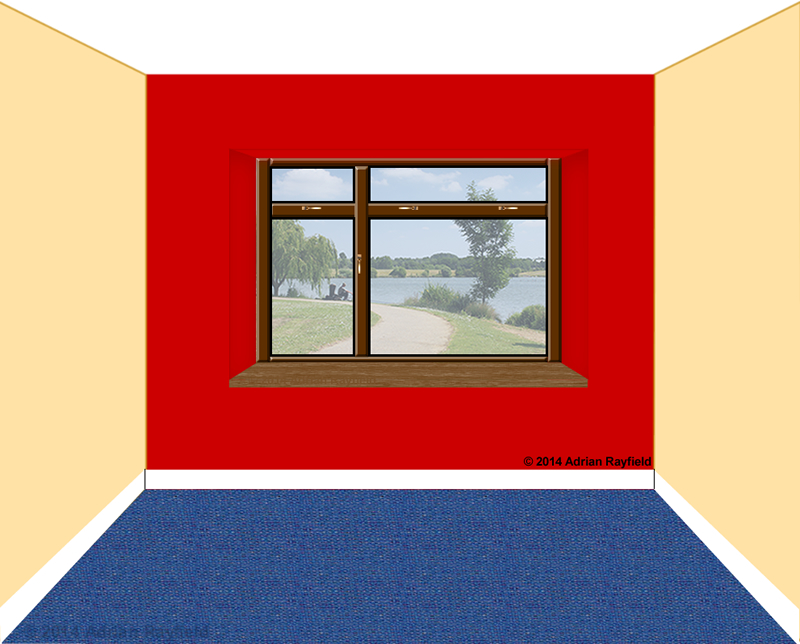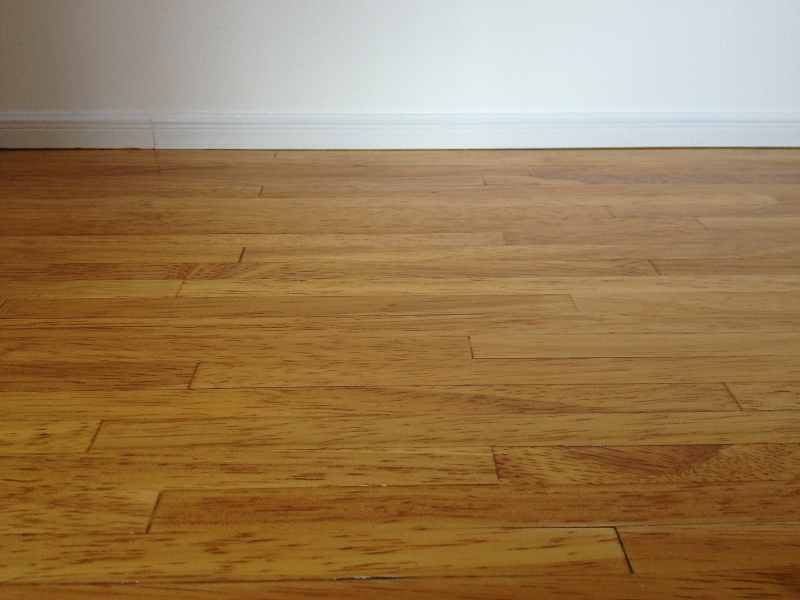Painting, decorating and home improvement tips blog
Feature Walls : How To paint a feature wall
Posted by Adrian
January 14th, 2014
Feature Walls : How To paint a feature wall
Feature walls have become very popular in recent years, they are a great way of giving a room a new look without the expense of changing everything in a room or completely redecorating. Simply by re-painting the feature wall can transform the look of a room. You can also follow the latest trends simply by re-decorating the feature wall.
Feature walls can be painted or wallpapered, it is personal choice and it will depend on the type of look you are going for.
Sometimes a feature all is called an accent wall, but they are both the same thing.
Deciding on paint for a feature wall
Deciding on what colour paint to buy for a feature wall will be determined by how the remaining walls have been decorated, typically a contrasting colour is used. But if the other walls have been wallpapered you can pick a colour from the paper to use as the feature wall colour.
Once you have decided on the colour for your feature wall you can buy the paint, you can buy ‘Feature Wall’ paint, this is just over a litre in size and should be enough to paint one wall. You don’t have to go this route, you can buy any colour in any sized can of paint. You could even use leftover paint if it suits your needs.
If you are unsure how much paint you will require for your feature wall, give our paint calculator a go, simply fill in the required figures and hit the calculate button and you will be told how many litres you need to by for your given area.
Painting a feature wall
To paint your feature wall, you can either mask the adjoining walls, skirting and ceiling with low tack masking tape, then cut in with a brush around the edge of the feature wall, just overlapping the masking tape but being careful not to paint any other surface. The use a roller to fill in the main wall area. By using masking tape you should achieve a straight line.
If you are confident in cutting in you can cut in without masking up. Cutting in is the term used whereby you use a paintbrush to go up to an adjoining surface, be it a wall, ceiling or skirting boards.
Once you have cut in or painted up to the masking tape and painted the first coat onto your feature wall, allow the paint to fully dry before applying a second coat. When you have painted the second coat you can remove the masking tape, if you used any.
Making a statement
By painting a feature wall you are making a statement, and making this one wall the focal point of a room. You may want to do this to highlight some pictures that are hanging on the wall, you maybe make a fireplace the focus of the room or simply it can give orientation to a room.
Whatever the reason for painting a feature wall, it can quickly and easily transform any room and give a focal point to an area of a room.

Tags: Decorating, Emulsion, Feature, Feature Wall, Paint, Paint Calculator, Painting, Statement, Wall
Posted in Decorating Tips | No Comments »
Colour trends for 2014
Posted by Adrian
December 1st, 2013
Colour trends for 2014
Dulux Colour Futures™ from AkzoNobel have come up with the upcoming trends for colour for 2014, through their international research they have selected a range of colours they think will be in trend throughout 2014, and have picked a dominant colour for the year.
Colour palettes and colour trends for 2014
The colour theme is being called ‘Unlocking Potential’
” we see a world in search of answers, which provides us with an open and exciting palette of colours to inspire renewal in the year ahead.”
Quote from ColourFutures™
The theme consists of the following five colour palettes and colour moods:
- Silent Revolution
- Margin of Proof
- Urban Folk
- Secret Garden
- Do It Now!
What is to colour for 2014
The colour of the year 2014 is……. 90GG 19/151 (also known as Teal).
“A tertiary colour, teal is the combination of primary blue and secondary green which today is used to describe several different tones of this majestic colour. Somewhere between blue and green it has come to symbolise balance, but should be combined with neutral tones and shades of wood so as not to overwhelm a space.”
Quote from ColourFutures™
You can see more of this years colour schemes here:
Dulux Trade website or here:
http://www.colourfutures.com and download the Colour Futures book(PDF).
Paint Calculator
If you would like to use the colour of the year (90GG 19/151) or any other colour you need to buy and need to work out how much you need to buy, use our FREE Paint Calculator.
Tags: 2014, 90GG 19/151, AkzoNobel, Colour of the year, Dulux, Dulux Colour Futures, Dulux Trade, Emulsion, Paint, Paint Calculator, Teal, Trends
Posted in Decorating Tips, News, Resources | No Comments »
How to sand a floor
Posted by Adrian
November 23rd, 2013
How to sand a floor
You may want to have an alternative floor covering to carpet, but don’t want the expense of a hardwood or laminate floor. Well, if you have wooden floorboards you can sand them down and either paint them a colour or use a clear floor varnish to show off the beautiful wood, or stain them.
To sand the floor well you will need to hire a floor and an edging sander. Hiring these is relatively inexpensive at around £50 for the two sanders for a day, and you typically get 24 hours hire which should be enough time for an average sized room.
Before you start sanding
As you sand the floor you will make a lot of dust, so remove as much as you can from a room, cover wall and ceiling lights (as long as they are not in use) with black bags, put masking tape over wardrobe doors and cupboards to prevent dust getting in, you can also seal around any doors to try and contain the dust in the one room.
Safety first
You should wear a suitable dust mask, goggles and ear defenders whilst sanding. These can be bought from the hire shop when you pick up the sanders.
Preparation for sanding the floor
Before you start sanding you should fix any loose floorboards, replace any damaged or rotten boards, and nail punch raised nails as they can catch the sandpaper and rip it, and maybe even cause damage to the sander which could result in paying a charge for repair at the hire centre.
Start sanding
To start sanding decide on the coarse of sandpaper to use, you should of got three types when you hired the sander, a coarse, medium and fine. Depending on the condition of the floor will depend on what sandpaper to use, if the floor is in good condition and has not been previously painted or stained you can use the medium, otherwise start with the coarse.
You should keep the sander moving at all times whilst it is switched on to prevent making dips and low spots.
Sand diagonally across the boards, this will help level them off and remove a good amount of the surface to reveal the wood lower down. Once you have completed one diagonal sanding, go the other way, and them sand in the direction of the boards.
Once you are happy with the boards you can change to the medium grit, working in the direction of the boards go up and down overlapping each strip, once you have done this a couple of times, repeat the process with the fine sandpaper until the floor is smooth.
Finishing of the edges
To finish off the edges, use the edging sander, again use the coarse, medium and fine sandpaper. A word of warning, be careful around heating pipes as the sander could damage or even cut the copper pipe. You can use a scraper or chisel to get right into the corners and around pipework.

Staining, painting or varnishing a floor
Once you have sanded the floor and you are happy with it, it is time to clean up all the dust, vacuum the floor in both directions, and around and under the skirting boards, to remove any fine dust left on the floor, use a soft cloth and white spirit to wipe over the boards, this has the added benefit of removing and grease that may be left on the boards.
At this stage you need to be aware that the floor is vulnerable to stains so be careful walking across it and don’t spill your tea or coffee over it as you stand back and admire your hard work.
Painting the floor
If you are varnishing, painting or staining the floor the principle is the same, use a roller to apply the paint, I prefer to use a small roller but you may find it easier with a 9 inch roller to cover the area quicker. You will also need a brush to paint around the edges of the skirting boards.
Make sure the paint you are applying is a good quality floor paint, start with painting around the edge and then rollering up to it, apply one coat and leave to dry. If it is a quick drying paint / varnish you can apply more coats the same day otherwise leave overnight to dry.
Lightly rub the floor down between each coat and remove the dust before apply a second coat.
For high foot traffic areas apply three good coats to the floor. Once you have applied all the coats leave to fully dry before putting back furniture etc into the room. You may consider adding felt pads to the bottom of furniture such as dining table and chairs to help protect the floor.
Tags: Edging Sander, Floor, Floor Paint, Floor Sanding, Floor Stain, Floorboards, Flooring, Painting, Sanding, Sandpaper, Varnish
Posted in Decorating Tips | No Comments »
